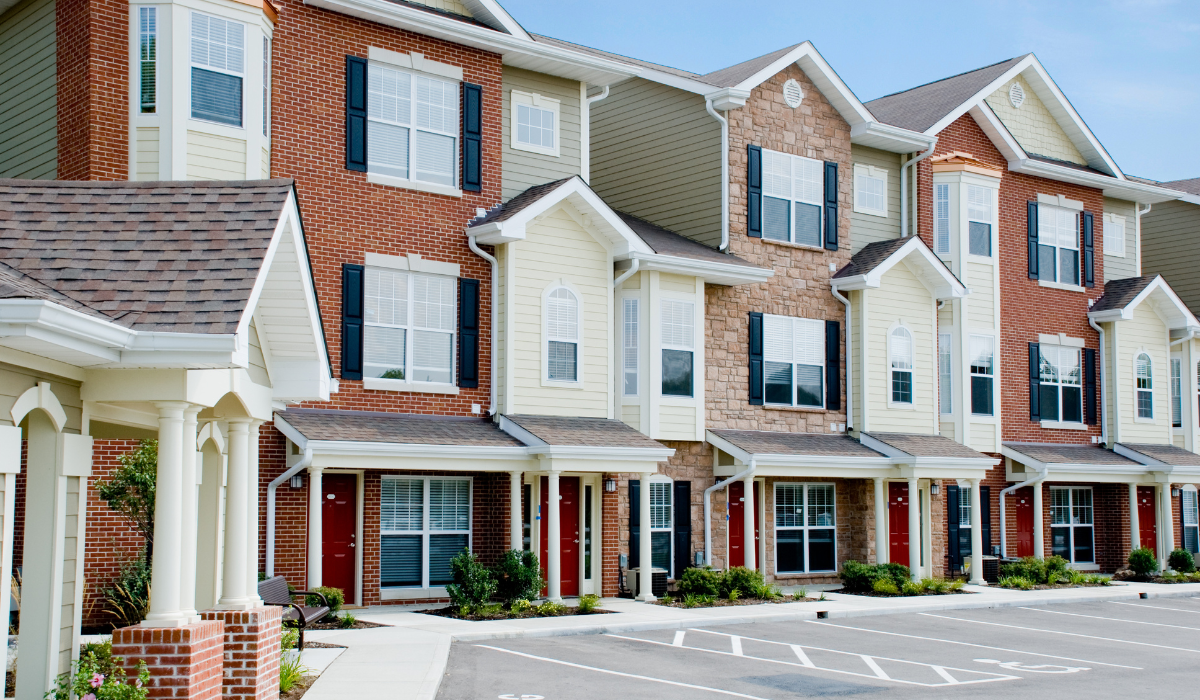It starts with a boardroom.
A developer scrolls through market data—graphs climbing steeply, headlines buzzing with urgency. The over-80 population is set to spike 47% in the next ten years. There will be more people over 65 than under 18 by 2034. Senior housing inventory? The lowest it’s been in 14 years. A $275 billion gap looms by 2030.
The numbers are loud. The opportunity is obvious.
“Let’s build,” someone says.
And just like that, the wheels turn.
But here’s the thing: building is only the beginning. Senior living isn’t just multifamily with wider hallways and handrails. It’s a layered, regulated, high-touch environment with operational challenges that developers and investors often underestimate. Demand might be exploding—but delivering a successful community takes more than blueprints and permits.
It takes smart planning. The right partners. And a firm grip on the details that quietly derail everything—like utility management, compliance, and cost control.
Let’s talk about what it really takes to make senior living work—and where the biggest risks (and rewards) are hiding.
Why Senior Living Is Different (and Demands More)
Independent living. Assisted living. Memory care. Skilled nursing. Senior living isn’t one product, it’s an ecosystem. Some properties specialize in a single type of care. Others combine multiple levels into a seamless “continuum of care” experience.
That flexibility is attractive to residents, but it comes with added complexity for developers. Every care level brings unique zoning codes, design standards, and operational requirements. What works for a 200-unit multifamily building won’t cut it here.
You can’t treat senior living like multifamily with a new name. It’s its own animal that requires purpose-built strategies to match.
New Construction Takes More Than a Permit
In multifamily, you can move from groundbreaking to leasing in under two years. In senior living? Expect more. As real estate attorney Craig Penny told McKnight’s Business Daily, a senior living project that once took 18 to 24 months to build now often takes 30 months.
Entitlements take longer too. Zoning is trickier. Inspections are more thorough. And you might need to negotiate tap-on fees for water or sewer service that can slow everything down. As NIC MAP’s senior housing construction cycle analysis points out, timelines are stretching for full-service, care-driven communities.In many rural or second-tier markets, local codes were written decades ago, long before the rise of multi-level care communities. If you’re planning a high-acuity or continuum-of-care property, zoning research should be step one.
That’s just the construction side. There’s also pressure from another direction: investors.

With demand for senior living at an all-time high, developers are moving quickly to capitalize. And that means investors are paying close attention. They’re not just funding blueprints. They’re vetting whether a new community can operate efficiently, scale responsibly, and stay compliant in a heavily regulated space.
Today’s investors expect more than occupancy projections. They want to see:
- Operational continuity across properties
- ESG and sustainability tracking
- Risk mitigation for compliance and utility costs
- Transparent reporting and data-driven insights
In other words: building isn’t enough. You need a rock-solid operational plan to earn investor confidence—and keep it.
Still, there’s room for creative strategies.
Conversions Can Work With the Right Strategy
What about retrofitting an existing property?
It’s possible. In some markets, repurposing an existing building can be a smart, cost-effective way to bring senior living units online faster. A former church in Texas is being reimagined into a 49-unit senior living community. And a nonprofit in Wisconsin acquired the old Kimberly-Clark HQ with plans to convert it into a blend of independent and assisted living.
Of course, conversions come with challenges. Zoning requirements, accessibility standards, and care-specific needs (especially for assisted living or skilled nursing) may require significant upgrades. But for the right property in the right location, it can be a strategic move.

Pro tip: Another strong option? Acquiring an existing senior living facility and expanding it. You avoid most of the zoning hurdles while unlocking value through modernization or added capacity.
Lock in Your Operating Partners Early
Here’s a lesson many developers learn the hard way: you can’t design the building first and figure out operations later.
A senior living facility must be designed and built to meet the zoning requirements for each level of care—independent living, assisted living, memory care, or skilled nursing. And those requirements aren’t one-size-fits-all. There are specific requirements that affect floorplans, unit features, and shared spaces. Independent living units may need full kitchens. Assisted living areas might require wider corridors, ADA-compliant bathrooms, and integrated nurse call systems. Miss those details early on, and you risk delays—or worse, redesigns.
That’s why securing your operating partners early in the development process is essential. They’ll help define the services your community will offer and the infrastructure it needs to support them.
And Then There’s the Stuff That Sinks ROI
You built the community. You filled the rooms. You’ve got the care team in place. But behind the scenes?
Your staff is buried in spreadsheets. Your utility invoices are scattered. You’re getting hit with late fees or unexplained rate hikes. No one knows the true cost of operations—and your investors are asking for more transparency. That’s where a lot of senior living portfolios are stuck today.
Most senior living communities bundle utilities into the rent. On paper, that simplifies billing for residents. But behind the scenes, it’s a different story.
Manually managing utility expenses takes time. It invites errors. And it makes it nearly impossible to get clean, reliable data across properties. When 1 in 7 utility bills has an error—and the average cost to process a bill in-house is $30 vs. $10 with Conservice—those hidden inefficiencies add up fast.

Add in late fees, inaccurate rates, and compliance risks? You’re looking at tens of thousands of dollars lost—quietly—every year.
Conservice Turns Utility Chaos into Operational Confidence
That’s where we come in. With Conservice, senior living operators get more than bill pay. You get:
- Auditing and error resolution on every invoice
- Late fee prevention
- Provider relations handled for you
- Vacancy recovery built in
- Compliance and rate monitoring across all your communities
- Automated dashboards for investor reporting and ESG tracking
Want to see what your utility data is hiding?
Explore Senior Living Solutions with Conservice
Build Smart. Manage Smarter.
Senior living is a high-opportunity market—but it’s also a high-stakes one. The smartest operators aren’t just investing in more units. They’re investing in systems that scale with them.
Because in this space, the winners won’t just be those who grow fast. They’ll be the ones who run lean, stay compliant, and operate with total visibility from day one.
Let’s make that your story.
Connect with Jennifer Love—your dedicated Senior Living utility expert.







